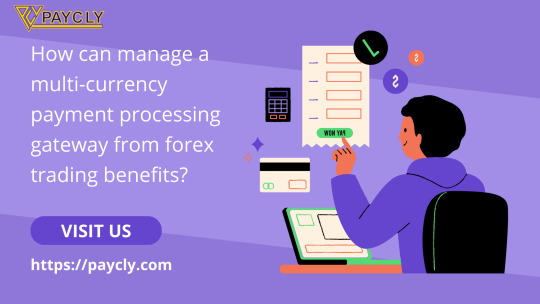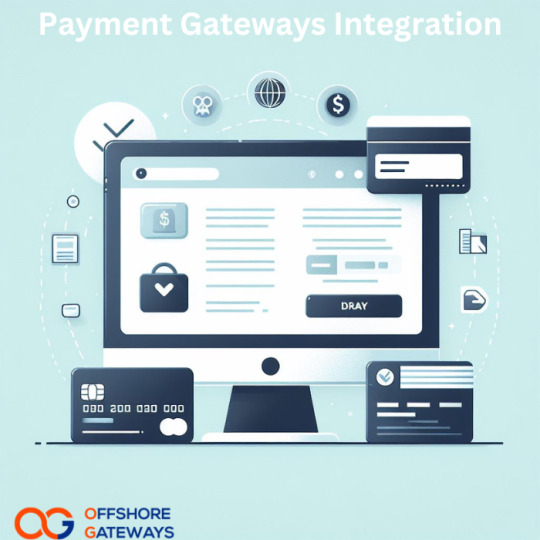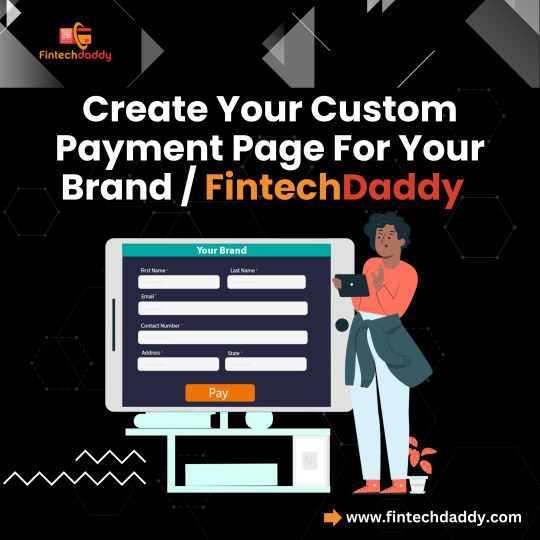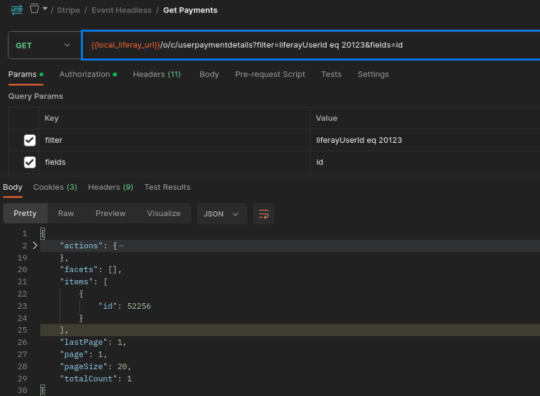#Payment Gateway Integration
Text
issuu
Payment gateway integration is the seamless incorporation of a payment gateway into your website, allowing secure and efficient online transactions. Your Merchant Services Rep offers expert payment gateway integration services, ensuring enhanced security, seamless checkout experiences, and increased trust for your business.
2 notes
·
View notes
Text
Stay Ahead of the Curve: Latest E-commerce Development Trends
Zapeerr provides comprehensive e-commerce development services tailored to meet the unique needs of businesses seeking to establish or enhance their online presence. Here are the key e-commerce development services offered by Zapeerr:
1. Customized Website Development: Zapeerr specializes in building customized e-commerce websites from the ground up, ensuring that each site is designed to reflect the brand identity and offers a seamless user experience.
Platform Selection and Implementation: Zapeerr helps businesses select the most suitable e-commerce platform for their needs, whether it's Shopify, WooCommerce, Magento, or a custom solution. They then handle the implementation and configuration of the chosen platform to ensure optimal performance.
Mobile Optimization: Zapeerr ensures that e-commerce websites are optimized for mobile devices, providing a consistent and intuitive shopping experience across all screen sizes and devices.
Payment Gateway Integration: Zapeerr integrates secure payment gateways into e-commerce websites, allowing businesses to accept payments from various sources securely and efficiently.
Inventory Management Solutions: Zapeerr develops robust inventory management systems that enable businesses to track stock levels, manage product variants, and prevent overselling, ensuring smooth operations and customer satisfaction.
Security Enhancements: Zapeerr prioritizes security by implementing measures such as SSL encryption, PCI compliance, and regular security audits to protect sensitive customer data and safeguard against cyber threats.
Performance Optimization: Zapeerr optimizes e-commerce websites for speed and performance, employing techniques such as caching, image optimization, and code minification to ensure fast page loading times and smooth navigation.
SEO Integration: Zapeerr integrates search engine optimization (SEO) best practices into e-commerce websites to improve visibility and attract organic traffic, helping businesses increase their online presence and drive sales.
Integration with Third-Party Services: Zapeerr facilitates seamless integration with third-party services such as shipping carriers, accounting software, CRM systems, and marketing tools, enabling businesses to streamline operations and enhance efficiency.
Continuous Support and Maintenance: Zapeerr provides ongoing support and maintenance services to ensure the smooth functioning of e-commerce websites, including software updates, bug fixes, and technical support to address any issues promptly.
With Zapeerr's expertise in e-commerce development, businesses can achieve their online objectives effectively and stay ahead in the competitive digital landscape.
#E-commerce website development#Custom e-commerce solutions#Platform integration. Mobile optimization#Payment gateway integration#Inventory management#Security enhancements#Performance optimization#SEO integration#Third-party integration#Continuous support and maintenance#User experience design#Responsive web design#Cross-browser compatibility#Conversion rate optimization
0 notes
Text
How can manage forex trading benefit from a multi-currency payment processing gateway?
In the world of regulated forex trading, where precision, speed, and security are paramount, the integration of a multi-currency payment processing gateway emerges as a strategic necessity. This advanced financial tool offers a range of benefits that significantly enhance the efficiency, flexibility, and overall user experience for both traders and forex trading platforms.

Expanding Global Reach with Multi-Currency Payment Processing Gateway:
A regulated forex trading platform often caters to a diverse international clientele. A multi-currency payment processing gateway allows traders to operate and transact in their preferred currencies. This not only broadens the platform's global reach but also accommodates the needs of traders from various regions, fostering a more inclusive trading environment.
Seamless Transactions for Traders:
One of the primary advantages of a multi-currency payment processing gateway is its ability to facilitate seamless transactions in multiple currencies. Traders can deposit and withdraw funds in their local currencies without the hassle of currency conversions. This streamlines the payment process, reducing complexities and ensuring a more straightforward experience for users.
Risk Mitigation and Regulatory Compliance:
Regulated forex trading platforms operate in a highly scrutinized environment. A multi-currency payment processing gateway aids in mitigating currency-related risks by providing real-time exchange rate information. Additionally, these gateways often come equipped with features that assist in adhering to regulatory compliance standards, offering a secure and transparent financial ecosystem for traders.
Enhanced Flexibility with Multiple Payment Options:
Multi-currency payment processing gateways empower regulated forex trading platforms to offer a variety of payment options. Traders can choose from credit cards, bank transfers, and alternative payment methods, enhancing flexibility and catering to diverse user preferences. The ability to transact with familiar payment methods contributes to a positive user experience.
Efficient Fund Management and Real-time Transactions:
In the fast-paced world of forex trading merchant account , timely fund management is critical. A multi-currency payment processing gateway enables efficient fund transfers, allowing traders to deposit and withdraw funds in real time. This agility in transactions is a valuable asset, especially in an industry where market conditions can change rapidly.
Competitive Advantage for Forex Trading Platforms:
The integration of a multi-currency payment processing gateway can provide a competitive edge for regulated forex trading platforms. By offering a seamless and versatile payment experience, platforms can attract and retain traders in a highly competitive market. The convenience and efficiency provided by such gateways contribute to a positive reputation for the trading platform.
Choosing the Right Payment Gateway Provider:
Selecting a reliable payment gateway provider is crucial for regulated forex trading platforms. The provider should offer a secure and scalable solution that aligns with the specific needs of the forex industry. Considerations such as security features, compliance support, and a user-friendly interface should guide the choice of a payment gateway provider.
Conclusion: Unlocking the Potential of Multi-Currency Payment Processing for Regulated Forex Trading:
In conclusion, the integration of a multi-currency payment processing gateway is a strategic move for regulated forex trading platforms. Beyond offering seamless transactions and efficient fund management, it provides a competitive advantage, enhances global reach, and supports regulatory compliance. As the forex trading landscape continues to evolve, platforms that prioritize the integration of advanced payment processing solutions position themselves to thrive in an increasingly dynamic and globalized financial ecosystem.
#Casino payment gateway#Payment gateway#Best Payment gateway#Payment processor#online payment processors#Payment gateway providers#Payment gateway integration#Payment processor for gateway#Offshoregateway payment gateway#Tech support payment gateway#High Risk Payment Gateways#High Risk Payment Gateway instant approval
0 notes
Text

Payment gateway integration
Choose a Payment Gateway Provider:
Research and select a "payment gateway" provider that suits your business needs. Consider factors like transaction fees, supported currencies, security features, and ease of integration.
Create an Account:
Sign up for an account with the chosen "payment gateway provider". Provide necessary information about your business, such as contact details, bank account information, and website URL.
#Casino payment gateway#Payment gateway#Best Payment gateway#Payment processor#online payment processors#Payment gateway providers#Payment gateway integration#Payment processor for gateway#Offshoregateway payment gateway#Tech support payment gateway#High Risk Payment Gateways#High Risk Payment Gateway instant approval
0 notes
Text
In-app transactions made easy: Enhance user satisfaction by enabling swift and secure payments on the go
Revolutionize your mobile app experience through seamless integration with cutting-edge payment gateways. Elevate user satisfaction by enabling swift, secure, and hassle-free transactions within the app. With a focus on convenience, our integrated solution transforms the way users interact, allowing them to effortlessly make purchases, subscribe to services, and engage with premium content — all without leaving the app. Our commitment to a user-friendly interface ensures a smooth journey from product selection to payment completion, enhancing overall app engagement and driving monetization.

Integration with mobile apps goes beyond mere transactions; it’s about creating an immersive and efficient ecosystem for your users. Our state-of-the-art integration seamlessly weaves together the fabric of your app and secure payment gateways, fostering a harmonious environment where users can explore, engage, and transact with unparalleled ease.

From in-app purchases to subscription renewals, our solution ensures that every user interaction is met with a responsive and intuitive payment process. Our commitment to security is unwavering, incorporating robust encryption, tokenization, and multi-factor authentication to safeguard user data and financial transactions.

In a world where user expectations are high, our integration with mobile apps is not just a transactional gateway — it’s a strategic investment in user satisfaction, app growth, and sustained monetization. Join the league of innovative apps that have embraced the future of mobile commerce through our comprehensive integration solution.

Moreover, our integration is developer-friendly, with streamlined APIs and SDKs, allowing your tech team to implement and optimize the payment flow seamlessly. Real-time analytics provide valuable insights into user behavior, allowing you to make data-driven decisions and continually refine the user experience.
read more
#User-friendly interface#Contactless payments#User satisfaction#Seamless transactions#Mobile app integration#Payment gateway integration
0 notes
Text

In the fast-paced world of digital marketing, businesses are constantly seeking innovative ways to reach their target audience and drive growth. E-commerce has emerged as a powerful tool that not only expands the reach of businesses but also enhances customer experience. In this comprehensive guide, we will explore the dynamic realm of e-commerce and how it can elevate your business in the digital marketing landscape.
Do Read: https://ennobletechnologies.com/e-commerce/e-commerce-solutions/
#Conversion Rate Optimization#Cross-Platform Shopping#Customer Retention Strategies#Digital Payment Solutions#Digital Storefronts#E-Commerce Analytics#E-Commerce Branding#E-commerce content marketing#E-Commerce Data Analysis#E-Commerce Marketing#E-Commerce Optimization#E-Commerce Platforms#E-Commerce Sales Funnels#e-commerce SEO services#E-Commerce Solutions in Digital Marketing#E-Commerce Website Development#Mobile Shopping Apps#Online Retail Strategies#Payment Gateway Integration#SEO for E-Commerce#Shopping Cart Integration#Social Commerce
1 note
·
View note
Text
Revolutionizing Transactions: The Crucial Role of Payment Gateway Integration with WebPays
In today's fast-paced digital era, seamless online transactions are the backbone of successful businesses. As consumers increasingly shift towards the convenience of online shopping and e-commerce, the significance of robust payment gateway integration cannot be overstated. Among the leading players in this domain, WebPays stands out as a game-changer, providing a secure and efficient platform for businesses to integrate payment gateways seamlessly.

Understanding Payment Gateway Integration
Payment gateway integration is the process of connecting a website or application to a payment processing network, allowing businesses to accept online payments securely. With the rising tide of online transactions, a reliable payment gateway is indispensable for businesses to thrive in the digital landscape. WebPays, with its cutting-edge technology, ensures that this integration process is not only smooth but also tailored to the specific needs of each business.
Seamless Transactions, Enhanced User Experience
WebPays excels in delivering a seamless payment experience for both businesses and consumers. By integrating payment gateways effectively, businesses can offer a user-friendly checkout process, reducing cart abandonment and boosting customer satisfaction. The streamlined process ensures that users can complete transactions swiftly, enhancing the overall online shopping experience.
Security at the Forefront
One of the primary concerns in online transactions is security. WebPays prioritizes data security by implementing robust encryption and authentication measures. Through payment gateway integration, sensitive customer information is safeguarded, instilling trust and confidence among users. This commitment to security not only protects businesses from potential threats but also fosters long-term customer loyalty.
Diverse Payment Options for Global Reach
WebPays recognizes the importance of catering to a diverse customer base. Through payment gateway integration, businesses can accept a variety of payment methods, including credit cards, debit cards, digital wallets, and other alternative payment methods. This flexibility ensures that businesses can tap into global markets, accommodating the preferences of customers from different regions. As the digital economy becomes increasingly borderless, this capability is a strategic advantage for businesses looking to expand their reach.
WebPays: Tailored Solutions for Every Business
What sets WebPays apart is its commitment to providing tailored solutions for businesses of all sizes and industries. Whether you run a small e-commerce store or a large enterprise, you can customize WebPays' solutions to meet your specific requirements. This adaptability ensures that businesses can scale their operations without worrying about outgrowing their payment processing capabilities.
Integration Made Effortless
The process of integrating a payment gateway with WebPays is designed to be straightforward and user-friendly. Businesses can seamlessly integrate payment gateways into their websites or applications, with minimal technical hurdles. WebPays provides comprehensive documentation and support, making the integration process accessible even for those without extensive technical expertise. This simplicity not only saves time and resources but also empowers businesses to focus on their core competencies.
Real-Time Transaction Monitoring
WebPays goes beyond facilitating transactions; it empowers businesses with real-time transaction monitoring. Through a user-friendly dashboard, businesses can gain insights into transaction trends, monitor payment status, and identify potential issues promptly. This real-time visibility enables businesses to make informed decisions, optimize their payment processes, and enhance overall efficiency.
Ensuring Regulatory Compliance
In the ever-evolving landscape of digital payments, staying compliant with regulations is non-negotiable. WebPays stays ahead of the curve by ensuring that its high-risk merchant solutions adhere to the latest industry standards and regulatory requirements. This commitment not only protects businesses from legal implications but also contributes to building a trustworthy and reliable brand image.
The Future of Payments with WebPays
As we navigate the future of digital transactions, the role of payment gateway integration becomes increasingly pivotal. WebPays emerges as a frontrunner, not merely as a service provider but as a strategic partner for businesses looking to thrive in the digital economy. The synergy between WebPays and its seamless payment gateway integration is poised to redefine how businesses handle online transactions, setting new benchmarks for efficiency, security, and customer satisfaction.
Conclusion
In conclusion, payment gateway integration with WebPays is a transformative step for businesses aiming to excel in the digital marketplace. By prioritizing security, offering diverse payment options, and providing tailored solutions, WebPays empowers businesses to navigate the complexities of online transactions with ease. As the digital economy continues to evolve, WebPays stands as a beacon, guiding businesses towards a future where seamless, secure, and efficient transactions are not just a necessity but a competitive advantage.
0 notes
Text
Invimatic is an innovative tech company specializing in seamless Payment Gateway Integration solutions. They excel in crafting robust systems that effortlessly integrate payment gateways into diverse platforms, enhancing transactional experiences for businesses. With a focus on reliability and security, Invimatic's expertise lies in developing tailored integration solutions, ensuring smooth and efficient payment processing for clients across various industries. Their commitment to cutting-edge technology and client-centric approach positions them as leaders in facilitating secure, hassle-free payment integrations for businesses worldwide.

0 notes
Text
#best payment gateway integration services#payment gateway#payment gateway connection#payment gateway integration
0 notes
Text
Accept Online Payments in Minutes with Payment Gateway API Integration
Payment Gateway API integration is the process of connecting your website or application to a payment processor using its API. This allows you to accept online payments securely and efficiently.

Benefits of integrating a payment API:
Increased sales: Accepting online payments makes it easier for customers to purchase your products or services, which can lead to increased sales.
Improved customer experience: A seamless checkout process is essential for a positive customer experience. Payment API integration can help to streamline your checkout process and make it easy for customers to complete their purchases.
Reduced fraud: Payment processors use a variety of security measures to protect your customers’ payment information. This can help to reduce fraud and chargebacks.
To integrate a payment API into your website, you will need to:
Choose a payment processor: There are many different payment processors available, so it is important to choose one that meets your specific needs. Factors to consider include the types of payments you want to accept, the countries you operate in, and the pricing and features offered by different providers.
Set up a merchant account. Once you have chosen a payment processor, you will need to set up a merchant account. This involves providing the payment processor with some basic information about your business, such as your name, address, and contact information.
Obtain API keys. Once your merchant account is set up, you will obtain API keys from the payment processor. These keys will allow you to authenticate your website or application with the payment processor and make API calls to process payments.
Integrate the payment API into your website. This process will vary depending on the programming language and framework you are using. However, most payment processors provide detailed documentation and code samples to help you get started.
Test the payment API- Once you have integrated the payment API into your website, it is important to test it thoroughly to make sure it is working properly. You can do this by making test payments using your own credit or debit card.
Here are some additional tips for integrating a payment API into your website:
Make sure your website is secure- This means using an SSL certificate and encrypting all sensitive data, including payment information.
Use a reputable payment processor. There are many fraudulent payment processors out there, so it is important to choose one that is trusted and secure.
Follow the payment processor’s documentation carefully- This will help you avoid errors and ensure your integration is successful.
Test your payment API regularly- This will help to identify and resolve any problems early on.
Once you have successfully integrated a payment API into your website, you will be able to accept online payments from customers around the world. This can help you to grow your business and reach new markets.
#payment gateway integration#payment integration#integrate payment gateway in website#payment gateway api integration#payment gateway integration in android#payment gateway integration services#online payment gateway integration#payment system integration
0 notes
Text
Create Your Custom Payment Page For Your Brand / Fintechdady
The FintechDaddy Payment page is the easiest way to accept payment with Zero coding Knowledge. We have integrated the payment link directly into Your Payment Model. Track all Your Payment With Just one Click Our Dashboard is very easy to read data. Collect Information Of Customers Which Important To Your Business. Add & Modify Fields. Ex- Name, Mobile No, E-mail.
For more information: https://fintechdaddy.com/Payment-Page
Smart Routing Gateway
Best Payment Gateway

#best payment gateway#secure payment gateway#payment gateway integration#Smart Routing Gateway#Best Payment Gateway#online payment gateway#ecommerce payment gateway#ecommerce#payment gateway#finance#fintechdaddy payment gateway
0 notes
Text

Seamless Shopify Payment Gateway Integration by CartCoders
CartCoders is a leading payment gateway integration company and easily integrates Shopify's payment gateway with CartCoders for a seamless and secure payment processing experience. Our expert team ensures smooth integration, enhancing your online store's efficiency and customer satisfaction.
0 notes
Text
How to Integrate Stripe Payment with Liferay: A Step-by-Step Guide

Introduction
There are mainly two ways to implement stripe payment integration
1. Prebuit Payment Page
This payment provides by the stripe so we do not need to code for it.
It has all functionality coupons for discounts, etc
The UI part for the payment integration is fixed. We cannot change it.
Need to create a product in the stripe dashboard.
And only passing quantity at payment time total price and discount all those things managed by the stripe.
2. Custom Payment flow
This flow will use when we have a custom payment page or a different design
And customization from the payment side and only the user will do payment only not specify any product.
In this flow, no need to create a Product for the payment.
Need to create below APIs
Create-payment-intent API: add payment-related detail in the stripe. It will return client_secret for making payment.
Webhook
Need to do the below things from the FE
Confirm Payment: It will take the card detail and client_secret that we got from the create-payment-intent API.
We are going to use a custom payment flow for the Event Module Payment integration.
Object Definition for the Stripe
Introduction
We are using the stripe for payments but in the feature, there might be clients who will use other payment service provider use.
So, using two objects we will handle it
Payment Object that contains unique data like used, stripe user id, type, and relation with Calander Event Payment object
Calander Event Object contains data related to the Event.
Payment objects have one too many relations with the Calander Event Object.
P-Flow for the Stripe payment integration
We will perform the below operations for Stripe payment integration in the Calander event.
Create a customer in Stripe while the Liferay user gets created.
Add create a customer in register API
Also, while the Liferay user gets created using the Liferay admin panel
Create Payment Intent API for adding payment related in the stripe and take payment stripe ID for confirm Payment
Add the same detail in the Liferay object with event data (status – pending) while they call payment intent API.
Custom method for customer management for stripe
private void stripeCustomerCrud(User user, String operationType) {
// If operation type is not equal to create, update, or delete, give an error
if (!Arrays.asList(CREATE_OP, UPDATE_OP, DELETE_OP).contains(operationType)) {
log.error(“Operations must be in Create, Update, and Delete. Your choice is: ” + operationType + ” operation.”);
return;
}
try {
Stripe.apiKey = “your api key”;
String stripeCustomerId = “”;
// Get Stripe Customer ID from the user custom field when operation equals to update or delete
if (operationType.equals(UPDATE_OP) || operationType.equals(DELETE_OP)) {
ExpandoBridge expandoBridge = user.getExpandoBridge();
stripeCustomerId = (String) expandoBridge.getAttribute(STRIPE_CUST_ID);
if (stripeCustomerId == null || stripeCustomerId.isEmpty()) {
throw new NullPointerException(“Stripe Customer Id is empty”);
}
}
Map<String, Object> customerParams = new HashMap<>();
// Add name, email, and metadata in the map when operation equals to create or update
if (!operationType.equals(DELETE_OP)) {
Map<String, String> metadataParams = new HashMap<>();
metadataParams.put(“liferayUserId”, String.valueOf(user.getUserId()));
customerParams.put(“name”, user.getFullName());
customerParams.put(“email”, user.getEmailAddress());
customerParams.put(“metadata”, metadataParams);
}
Customer customer = null;
// Operation-wise call a method of the stripe SDK
if (operationType.equals(CREATE_OP)) {
customer = Customer.create(customerParams);
setExpando(user.getUserId(), STRIPE_CUST_ID, customer.getId());
} else if (operationType.equals(UPDATE_OP)) {
Customer existingCustomer = Customer.retrieve(stripeCustomerId);
customer = existingCustomer.update(customerParams);
} else if (operationType.equals(DELETE_OP)) {
Customer existingCustomer = Customer.retrieve(stripeCustomerId);
customer = existingCustomer.delete();
}
log.info(operationType + ” operation is performed on the Stripe customer. (Data = Id: ” + customer.getId() + “, ” +
“Name: ” + customer.getName() + “, Email: ” + customer.getEmail() + “)”);
} catch (NullPointerException e) {
log.error(“Site custom field does not exist or is empty for the Stripe module: ” + e.getMessage());
} catch (StripeException e) {
log.error(“Stripe Exception while performing ” + operationType + ” operation: ” + e.getMessage());
}
}
Webhook API
Params: payload and request
This API will call when any update is there for the specified payment
We must update the Liferay Object according to the status of the payment Intent Object. A few statuses are below of Payment Object
payment_intent.amount_capturable_updated
payment_intent.canceled
payment_intent.created
payment_intent.partially_funded
payment_intent.payment_failed
payment_intent.requires_action
payment_intent.succeeded
APIs wise Flow for the Stripe payment integration
Create Payment Intent API
Using Payment Intent API, we insert transaction data and status as incomplete in the stripe, so it takes a few parameters like Liferay user id, calendar event id, stripe customer id, total amount, and currency. It will return the payment Intent id and client secret.

Get User Payment Detail Id if Not Prent Then Add
Get the Parent object Id from the below API for passing it into
We need the id of the parent object to make a relationship so we will call the user payment details headless API by passing the Liferay user id from the session storage. It will return the id in the items for the POST eventpayments API.

If the above API items tab is empty, then you need to add user-related data in the user payment details object and take the id from the response and pass it in POST eventpayments API.

Add Data in Calendar Event Payment Object
The calendar Event object is used to track the event payment transaction data in our database.
To add an entry in the calendar event object after the payment intent success response because we are passing payment intent id as transaction id in the Object.
Add prices, quantity, payment status (default – in Complete), tax amt, total amt, transaction Id(Id from the create payment intent response), r_event_c_payment_id(id from the userpaymentdetails headless API), site id as 20119 as default value.

Conclusion
Integrating Stripe payment functionality with Liferay Development has proven to be a seamless and efficient solution for businesses seeking to streamline their online payment processes. By implementing this integration, businesses can offer their customers a secure and convenient payment experience, leading to increased customer satisfaction and loyalty.
Read More Stripe Payment Integration With Liferay
0 notes
Text
How does unregulated forex trading benefit from a multi-currency payment processing gateway?
How does unregulated forex trading benefit from a multi-currency payment processing gateway?
Unregulated Forex Trading and Multi-Currency Payment Processing Gateway
Unregulated forex trading can benefit from a multi-currency payment processing gateway in several ways:
Access to Multiple Currencies:
A "multi-currency payment processing gateway" allows unregulated forex trading platforms to offer their clients the ability to deposit and withdraw funds in various currencies. This can attract traders from different parts of the world who prefer to trade in their local currencies, thereby expanding the platform's user base.
Enhanced Convenience for Traders:
Traders can make deposits and withdrawals in their preferred currencies without having to worry about currency conversion fees or fluctuations. This convenience can improve the overall trading experience and attract more traders to the platform.
Reduced Transaction Costs:
By utilizing a multi-currency "payment processing gateway", unregulated forex trading platforms can potentially reduce transaction costs associated with currency conversion. This can lead to cost savings for both the platform and its clients.
Competitive Advantage:
Offering a "multi-currency payment processing gateway" can be a competitive differentiator for unregulated forex trading platforms. It demonstrates a commitment to providing a global and inclusive trading environment, potentially setting them apart from competitors.
Mitigation of Foreign Exchange Risks:
With a "multi-currency payment processing gateway", unregulated forex trading platforms can mitigate foreign exchange risks associated with handling multiple currencies, as the gateway may offer features to manage such risks effectively.
Expansion Opportunities:
Access to a multi-currency "payment processing gateway" can open up opportunities for unregulated forex trading platforms to expand into new markets where traders prefer transacting in their local currencies.
In conclusion, a "multi-currency payment processing gateway" can provide unregulated forex trading platforms with the means to attract a broader client base, improve convenience, reduce costs, and gain a competitive edge in the market. However, it's "important to note that unregulated forex trading" carries significant risks, and traders should exercise caution when engaging in such activities.
Write a step-by-step guide on integrating a payment gateway with a website?
"Integrating a payment gateway" with a website involves several steps to ensure smooth and secure transactions. Here's a step-by-step guide:
Choose a Payment Gateway Provider:
Research and select a "payment gateway" provider that suits your business needs. Consider factors like transaction fees, supported currencies, security features, and ease of integration.
Create an Account:
Sign up for an account with the chosen "payment gateway provider". Provide necessary information about your business, such as contact details, bank account information, and website URL.
Get API Credentials:
After creating an account, you'll receive API credentials (e.g., API keys, merchant ID, secret keys) from the payment gateway provider. These credentials are necessary to authenticate your website's requests to the payment gateway.
Review Documentation:
Familiarize yourself with the documentation provided by "the payment gateway provider". Understand the APIs, SDKs, and integration methods available, along with any specific requirements or limitations.
Set Up Sandbox/Test Environment:
Most payment gateway providers offer a sandbox or test environment to simulate transactions without processing real payments. Set up your development environment to use this sandbox for testing purposes.
Integrate Payment Gateway into Website:
Depending on your website platform and programming language, integration methods may vary. Common integration methods include:
Direct API Integration: Use the payment gateway's APIs to process payments directly on your website.
Hosted Payment Page: Redirect users to a secure payment page hosted by the payment gateway provider.
Payment Plugins/Modules: Use pre-built plugins or modules provided by the "payment gateway" for popular platforms like WordPress, Magento, or Shopify.
Implement Payment Workflow:
Implement the payment workflow on your website:
Display payment options to users during checkout.
Collect necessary payment information securely (e.g., credit card details, billing address).
Use SSL encryption to protect sensitive data transmission.
Validate user input and handle errors gracefully.
Test Transactions:
Conduct thorough testing of the payment integration in the sandbox environment:
Test various scenarios (e.g., successful transactions, declined payments, refunds).
Verify that payment confirmation and error messages are displayed correctly.
Ensure that payment data is transmitted securely and that sensitive information is handled according to compliance standards (e.g., PCI DSS).
Go Live: Once you're confident that the integration is working correctly, switch to the live environment provided by the payment gateway. Update your website's configuration to use live API credentials.
Monitor and Maintain: Regularly monitor transaction activity and performance. Stay informed about updates or changes from the payment gateway provider, and keep your integration up to date with any new features or security enhancements.
By following these steps, you can successfully "integrate a payment gateway" with your website, enabling secure and convenient online transactions for your customers.
Casino payment gateway | Payment gateway | Best Payment gateway | Payment processor | online payment processors | Payment gateway providers | Payment gateway integration | Payment processor for gateway | Offshoregateway payment gateway | Tech support payment gateway | High Risk Payment Gateways |
https://www.offshoregateways.com/payment-gateway/how-does-forex-payment-gateway-work | https://www.offshoregateways.com/payment-gateway/casino-payment-gateway-for-curacao | https://www.offshoregateways.com/payment-gateway/payment-gateway-integration |
#Casino payment gateway#Payment gateway#Best Payment gateway#Payment processor#online payment processors#Payment gateway providers#Payment gateway integration#Payment processor for gateway#Offshoregateway payment gateway#Tech support payment gateway#High Risk Payment Gateways#High Risk Payment Gateway instant approval
0 notes
Text
0 notes